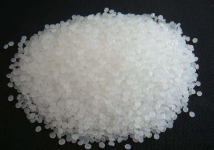read: 767 time:2025-05-16 13:54:01 from:化易天下
When comparing the acidity of benzoic acid and phenol, it’s important to consider the structural and electronic factors that influence their acidic properties. Both compounds are common in organic chemistry, yet they differ significantly in their acid strengths. This article will delve into the reasons behind why benzoic acid is more acidic than phenol.
Acidity in organic compounds is typically measured by their ability to donate a proton (H⁺) in a solution. The more readily a compound can donate a proton, the more acidic it is. This is often quantified using the pKa value; the lower the pKa, the stronger the acid. When we ask, “which is more acidic, benzoic acid or phenol,” we are essentially comparing their pKa values and the stability of their conjugate bases after losing a proton.
Benzoic acid is a simple aromatic carboxylic acid with the formula C₆H₅COOH. The key functional group here is the carboxyl group (-COOH). In an aqueous solution, benzoic acid donates a proton to form a benzoate ion (C₆H₅COO⁻). The carboxylate ion is stabilized by resonance, where the negative charge is delocalized between the two oxygen atoms. This resonance stabilization is a critical factor that makes benzoic acid more acidic compared to many other organic acids.
Phenol, on the other hand, has the chemical formula C₆H₅OH, where the hydroxyl group (-OH) is directly attached to the aromatic ring. When phenol loses a proton, it forms a phenoxide ion (C₆H₅O⁻). The negative charge on the oxygen atom in the phenoxide ion can also participate in resonance with the aromatic ring, but this delocalization is less effective compared to the carboxylate ion in benzoic acid. Therefore, the phenoxide ion is less stable than the benzoate ion, which results in phenol being less acidic.
The resonance effect plays a crucial role in determining which is more acidic, benzoic acid or phenol. In benzoic acid, the carboxylate ion’s negative charge is equally shared between two oxygen atoms, leading to significant resonance stabilization. In contrast, the phenoxide ion formed from phenol has its negative charge primarily localized on the oxygen atom, with only partial delocalization into the aromatic ring. This less efficient resonance in phenol means that the phenoxide ion is less stable, hence phenol is less acidic.
Another factor to consider when comparing the acidity of benzoic acid and phenol is the inductive effect. The carboxyl group in benzoic acid exerts a strong electron-withdrawing effect, which further stabilizes the negative charge on the benzoate ion. This inductive effect is not present in phenol to the same extent, making the benzoic acid a stronger acid than phenol. The electron-withdrawing nature of the carboxyl group enhances the molecule's ability to donate a proton, increasing its acidity.
In conclusion, benzoic acid is more acidic than phenol. This increased acidity is due to the superior resonance stabilization of the benzoate ion compared to the phenoxide ion and the strong electron-withdrawing inductive effect of the carboxyl group in benzoic acid. Understanding these underlying principles of organic chemistry helps in predicting the behavior of these compounds in various chemical reactions and applications.
By analyzing the structural differences and the resulting effects on acidity, it becomes clear that when asked, “which is more acidic, benzoic acid or phenol,” the answer is benzoic acid.

Jincheng Petrochemical's 300000 ton polypropylene plant successfully trial production, 2024 polypropylene market analysis

The ABS market remains sluggish, what is the future direction?

Market differentiation of bisphenol A intensifies: prices rise in East China, while prices generally decline in other regions

The production method and process flow of silicone acrylic lotion, and what are the common raw materials